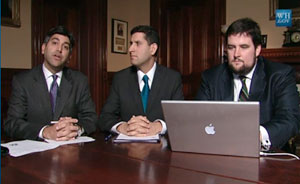Which government agencies are most transparent? Which are the least open? The surprising answers are in a new report from OMB Watch, a good-government group that monitors the White House’s Office of Management and Budget. The report shows that some agencies, such as NASA, the General Services Administration, the State Department, and the Department of Education, are doing a halfway decent job adhering to the minimum requirements of the “Open Government Directive” [OGD] released by the White House late last year. But even NASA scored only 40 of a potential 57.5 points on OMB’s scale, and most agencies did a whole lot worse—including, tellingly, the White House itself:
While agencies did generally meet the minimum requirements of the OGD for the new webpages, several scored particularly low in this review. The bottom five agencies, excluding those that failed to put up any open government page, were the Office of Management and Budget (OMB)/White House, the Department of Agriculture, FDIC, the Department of Health and Human Services, and the Department of Justice… [N]one of the bottom agencies’ have Inspector General reports, a link to Recovery Act data, reports to Congress, budget justifications, or performance results that can be easily found from the new webpages. Similarly, several laggard agencies, including FDIC, Department of Health and Human Services, OMB/White House, as well as others, failed to link to public participation tools for collecting input and open government ideas as mandated by the OGD.
You read that right: the White House agency that promulgated the open government plan has trouble living up to the spirit, if not the letter, of its own rules. That’s pretty sad.











